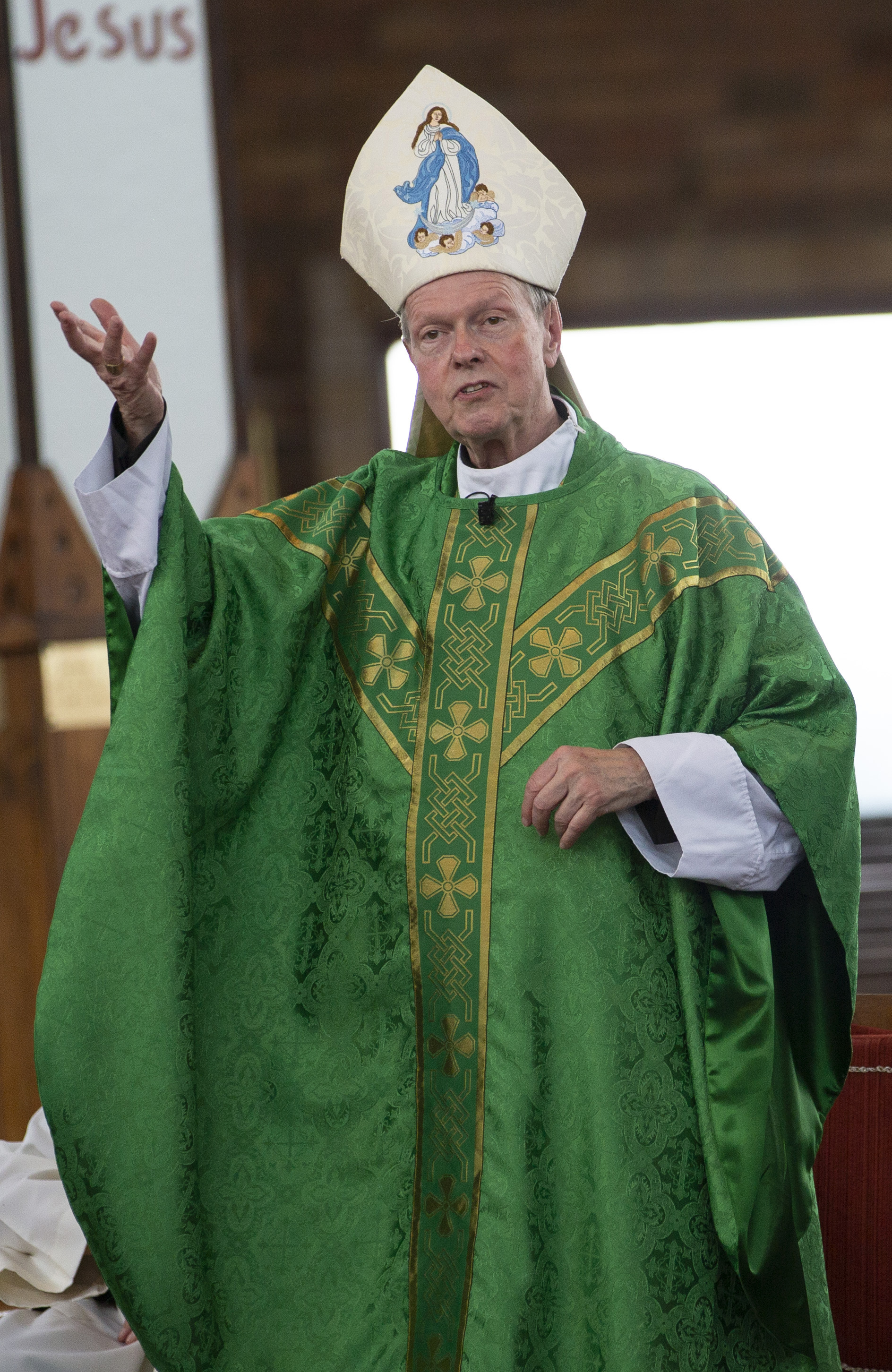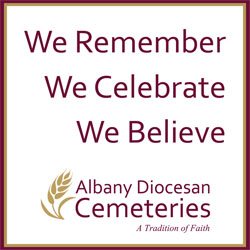April 6, 2018 at 1:53 p.m.
SPARC of recovery found in Guilderland
Sidebar story: Recovery is soul issue
Editor's note: The Evangelist continues its year-long series of monthly articles that take a look inside large institutions in the Albany Diocese, places you might have driven by and asked: "What goes on in there?" This week: St. Peter's Addiction Recovery Center in Guilderland.
After spending 19 days at St. Peter's Addiction Recovery Center in Guilderland and trying to overcome his alcoholism, Terry is home again.
A Capital District resident, Terry missed his wife and two children, a son, 8, and a daughter, 12, during his recent stay at SPARC. His rehabilitation kept him from seeing his son's hockey games and his daughter's school play.
But he now can look forward to being with his family for these special moments. Even simple, everyday tasks, such as cooking meals and getting his kids ready for school, will be a treat.
Struggle
Terry also knows that coping with alcoholism is a constant battle, one that requires major changes in his lifestyle. It won't be easy, but he hopes the treatment he received at SPARC will help him in his struggle.
"The only way to deal with this, and it's been difficult for me, is one day at a time, one hour at a time, if need be," he said. "I know I'll be reasonably safe for a period of time. But at some time, it's going to sneak up on me, and that's when we'll find out how I'm going to do."
Founded in 1990, SPARC is an inpatient rehabilitation facility that offers 24-hour assistance for men and women recovering from drug or alcohol addiction. Located on Mercycare Lane and tucked between Our Lady of Mercy Life Center and the Guilderland Public Library, SPARC conducts single-gender recovery groups that allow patients to address their problems about addictions.
The 40-bed facility, which also serves as SPARC's administrative headquarters, is divided into two units with 20 beds each, one for men, the other for women. Each unit has a core team comprised of certified social workers, chemical dependency counselors and activity therapists who interact with patients on a daily basis and provide them with various forms of treatment. Nurses and physicians also are available.
System of care
The Guilderland facility is one of several run by SPARC, which was established in 1972. Other facilities include the CARE Unit at St. Peter's Hospital in Albany, and outpatient programs on Central Avenue and Second Avenue, both in Albany, and on Remsen Street in Cohoes. The Second Avenue facility also operates a halfway house for men.
SPARC is part of the Mercycare System of Care, established by the Religious Sisters of Mercy in 1985 to provide an increasing level of excellence across seven programs of health care in the Capital District: medical care, surgical care, care for the elderly, care for women and children, cardiac care, cancer care, and addiction recovery care.
The treatment offered by SPARC is designed for people who may have tried outpatient services but need a more intensive rehabilitation program, according to Martin Wakesberg, SPARC's clinical director.
"This place is a timeout," he said. "They're physically free from the stressors and free to concentrate on their addictions and the problems they've got."
Typical day
Although most patients have alcohol as their primary addiction, some are hooked on marijuana, heroin, cocaine and other drugs, Mr. Wakesberg pointed out.
Patients who suffer from both a primary addiction and concurrent mental illness may receive treatment through the Mentally Ill Chemical Abusers (MICA) program at St. Peter's Hospital.
SPARC patients at the Guilderland facility follow a daily schedule that typically begins with wake-up at 6:30 a.m., breakfast at 7, affirmations or reflective meditations at 8:30, and group or activity therapy from 9 to 10:30.
In group therapy, 10 patients from a unit meet with social workers or chemical dependency counselors to express their feelings and discuss various topics relevant to their addictions. In activity therapy, patients engage in such activities as painting, bowling or visiting the library in order to get them to talk informally with each other and boost their self-esteem.
Afternoon efforts
Patients complete homework assignments or read from 10:30 to 11 a.m., and lunch is served at 11:30 a.m. After lunch, patients have more time for reading and homework; some receive acupuncture, a form of treatment that works particularly well for cocaine addicts, Mr. Wakesberg noted.
The afternoon continues with educational sessions or a non-denominational religious service at 2 p.m., group or activity therapy from 3 to 4:15 p.m., and time for reading or homework before dinner is served at 5 p.m.
In the evening, patients participate in activities or meet in groups to discuss specific topics such as relapse prevention or HIV. An Alcoholics Anonymous meeting is held from 8 to 9 p.m., followed by two hours of leisure time before lights out at 11 p.m.
Upon completing the program at the Guilderland facility, a patient may receive outpatient care at another SPARC facility over several weeks; families are encouraged to participate in their own plan of recovery, as well.
SPARC also offers such programs as SPARC Volunteers and Friends of SPARC for former patients and community members to provide personal support for patients and to coordinate social and recreational activities throughout the year.
Inside out
The Guilderland facility is a U-shaped, brick building with seafoam green-colored carpeting and furniture, along with pieces of mauve furniture. Administrative offices are located on the first floor; clinical staff offices and patients' bedrooms are located on the second floor.
Each bedroom has two beds, two dressers and two tables, with a shared bathroom between every two bedrooms. A pay telephone at the end of each unit is available for patients' incoming calls from 6 to 10 p.m. daily. Meeting rooms are used for group therapy, and lounge areas offer patients space to relax, although books, television and radio are not allowed.
The facility also has a multi-purpose gymnasium, a cafeteria and an art room used for activity therapy. A spacious courtyard with benches and picnic tables is located behind the building.
Most SPARC patients are from the Capital Region, although some are from Plattsburgh, New York City or Syracuse; the average age of patients is about 30. Although a patient's length of stay varies depending on his or her own unique needs, an average stay lasts around 20 days.
Final day
Terry spoke with The Evangelist during his 19th day at SPARC, one day before he was scheduled to leave the facility. He was eager to be reunited with his family but slightly apprehensive about leaving SPARC and facing the challenges of a recovering alcoholic.
"I have mixed emotions. On the one hand, I can't wait to get home," he said. But "if I told you I wasn't scared, I'd be less than honest."
He started drinking heavily during his college years and continued for the next 10 to 15 years. Occasionally, he made unsuccessful attempts to stop.
"I had some knowledge it was taking over my life, but most people in my shoes tend to downplay it," he said.
Terry eventually began missing work and experiencing blackouts, but he never was ticketed or incarcerated for any drunken driving-related offenses. His family and friends expressed their concern for his drinking problem, however, and he finally checked himself into SPARC about a year ago.
Relapse
He left after spending 14 days at the Guilderland facility, but he eventually began drinking again; in retrospect, he realizes that he was naive about just how powerful alcoholism can be.
"Once you're as far along as I am and you start using [alcohol] again, it's not easy to put the stuff down," he said. "It takes a while for people to get their feet on the ground."
During his recent stay at SPARC, Terry has become more keenly aware of the cunning and baffling nature of his alcoholism, and he feels better prepared to deal with his disease than before. "It was like turning the clock back 20 years," he said of his progress.
More to come
His ongoing treatment will consist of visits to SPARC's outpatient facility on Central Avenue. Initially, he'll go three nights per week; after a month or so, he only needs to go once each week.
Terry also plans to get together with his fellow former patients for card games and coffee once in a while. Having friends and family who are so supportive of his steps toward recovery makes his alcoholism somewhat easier to bear.
"My family and my circle of close friends are behind me 110 percent," he said. "I just happen to be lucky."
Help from counselor
One person who played an important role in Terry's treatment at SPARC was Joan Laius, a certified social worker. As Terry's case manager, it was her job to oversee his treatment from the moment he arrived until the time he left and to create a discharge plan for treatment beyond his stay.
Ms. Laius, a recovering alcoholic herself, finds her work to be challenging and gratifying, and she lets her patients know that their recovery is no picnic.
"I'm a firm believer in them starting to take some responsibility in themselves while they're here," she said. "This is a recovery program; they need to work on their recovery."
Her office walls are decorated with numerous sketches of wolves, hawks and other wildlife that her patients have given to her; two cardinals frequently perch upon her windowsill and pay her a visit.
Experience
In addition to her duties as a social worker and case manager, Ms. Laius is an acupuncture detoxification specialist who administers treatment to certain patients. She also is on call every three weeks and must intervene if a patient wishes to leave SPARC against medical advice or is threatening suicide, among other situations.
Ms. Laius believes her own experience as a recovering alcoholic enables her to connect with her patients on a personal level on their road to recovery.
"It helps me to put myself in their shoes. You can be empathetic toward it," she said.
She reminds patients who complete their treatment at SPARC that they can call her anytime they need to talk to someone. The progress they make during their stay at SPARC never ceases to amaze her.
"It's like a miracle takes place. It's unbelievable," she said.
(For information about SPARC, call 452-6700.)
Recovery is soul issue
Patients at St. Peter's Addiction Recovery Center in Guilderland experience healing in a variety of ways, not the least of which is spiritually.
Each Wednesday morning, Rev. Valerie Seyffert, SPARC's chaplain, conducts spiritual education sessions for all patients at the facility and teaches them the importance of having values in their lives.
In the afternoon, she celebrates a non-denominational worship service for about 20 patients; a nurse distributes Holy Eucharist for those Catholics who wish to receive.
Rev. Seyffert, a minister of Religious Science, considers spirituality to be a crucial part of recovery from alcoholism and said that it's never too soon to talk with patients about their faith.
"I've always had a great belief that you did not have to wait a month, a year or more for people to start understanding spiritual concepts," she said.
A recovering alcoholic herself and the daughter of alcoholic parents, Rev. Seyffert compared a patient's acceptance of God or some Higher Power to his or her early stages of alcoholism.
"That's what they found early on in their drinking or their drugging," she said. "It was a false spiritual experience."
Although some patients aren't ready to commit themselves to recovery through spirituality, those who are prepared to take that step and turn away from drugs or alcohol are transformed in a very positive way, Rev. Seyffert pointed out.
"That's what recovery is about, restoring that relationship within yourself," she said. "You need your conscious mind. You can't be numbing it."
(03-05-98) [[In-content Ad]]
- Washington Roundup: Russia-Ukraine negotiations elusive; immigrant Miami priest wrongfully detained
- Neb. bishop concerned about ’human dignity’ of detainees after governor plans ‘Cornhusker Clink’
- US Catholics’ donations help equip catechists in southern Africa to share the faith
- Florida bishops once again ask DeSantis for clemency on a scheduled execution
- Ahead of canonization, new statue of Blessed Carlo Acutis unveiled in Assisi
- Christians are called to help world find peace, reconciliation, pope says
- Ministries to DC homeless share concerns about their welfare amid encampment removal
- UPDATE: ‘Cruel hoax’ active shooter alert disrupts Villanova’s opening Mass
- AI ‘resurrections’ raise ethical issues, prolong grief, say Catholic experts
- On the road to Our Lady: How pilgrimage taught me the power of community







Comments:
You must login to comment.